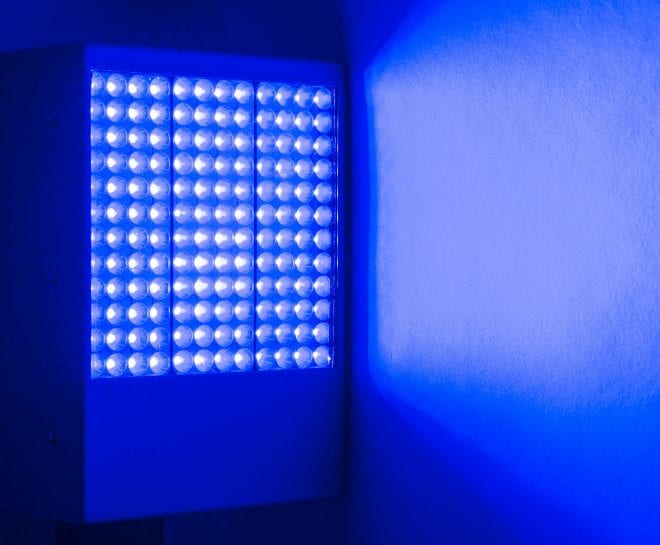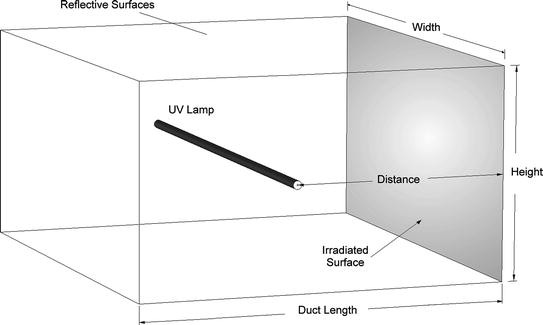Revealing the Conveniences of UV Disinfection: Making Certain Sanitized and clean Rooms
While typical cleansing approaches have actually long been relied upon, developments in innovation have actually presented a cutting-edge remedy that makes sure clean and sterilized spaces: UV sanitation. In addition, we will certainly dig into the safety considerations that need to be taken into account when carrying out UV sanitation. Prepare to discover a new dimension of cleanliness and uncover the untapped possibility of UV sanitation.

The Scientific Research Behind UV Sanitation
UV sanitation is a clinically tested approach that utilizes ultraviolet light to eliminate dangerous microbes from surface areas and water. The science behind UV disinfection exists in the capability of UV-C light to harm the DNA and RNA of bacteria, rendering them incapable to replicate and triggering their eventual fatality. UV-C light falls within the wavelength series of 200 to 280 nanometers, which is highly efficient in damaging bacteria, viruses, and various other pathogens.
When exposed to UV-C light, the genetic material of microbes takes in the energy from the light, causing the development of thymine dimers. These dimers interfere with the regular duplication and transcription procedures of the microorganisms, inhibiting their ability to survive and recreate (uv surface disinfection). The DNA and RNA damage brought on by UV-C light is deadly to the microorganisms, making UV disinfection a effective and dependable technique for killing a broad range of pathogens
UV sanitation is specifically beneficial in environments where traditional chemical anti-bacterials might be ineffective or impractical. It is a non-chemical method that does not leave any kind of deposits or damaging by-products, making it secure for usage in food processing, health care facilities, water therapy plants, and different other industries. In addition, UV sanitation is ecologically pleasant, as it does not add to the development of antibiotic-resistant microorganisms or various other damaging toxins.
Efficiency of UV Sanitation on Microorganisms
The effectiveness of UV sanitation in eliminating virus has been thoroughly studied and confirmed in various clinical research studies. UV radiation has the ability to suspend a large range of microorganisms, consisting of fungis, viruses, and germs, by damaging their DNA or RNA. This avoids them from reproducing and causing infections.
One research study released in the American Journal of Infection Control found that UV disinfection was reliable in reducing the visibility of multiple drug-resistant germs in hospital rooms. One more research study performed by the National Institute for Occupational Safety and Health and wellness showed that UV sanitation had the ability to eliminate 99.9% of the influenza infection on surface areas.
UV sanitation has also shown pledge in combating the spread of healthcare-associated infections (HAIs) According to a study published in The Lancet, making use of UV-C light along with typical cleansing protocols considerably decreased the incidence of HAIs in a hospital setup.
Moreover, UV disinfection has verified to be reliable versus arising microorganisms, such as the serious acute respiratory disorder coronavirus 2 (SARS-CoV-2), which creates COVID-19. A study performed by the National Arising Contagious Diseases Laboratories demonstrated that UV-C light can suspend the virus on surfaces within seconds.
Applications of UV Disinfection in Various Setups
With its tried and tested performance in eliminating microorganisms, UV disinfection has discovered applications in a selection of settings. One of one of the most usual locations where UV disinfection is made use of remains in health care facilities. UV technology is used to decontaminate person spaces, operating rooms, and various other high-touch surface areas, minimizing the risk of healthcare-associated infections. Additionally, UV sanitation is likewise being executed in food processing plants and dining establishments to make sure the security of foodstuff and protect against the spread of foodborne diseases. UV disinfection is additionally valuable in water treatment plants, where it is used to eliminate damaging microbes and provide safe drinking water.
An additional essential application of UV sanitation is in the air filtration sector. UV air cleansers are used in household, commercial, and Home Page commercial setups to eliminate air-borne germs, infections, and mold spores. This innovation is particularly helpful in settings where people are much more susceptible to respiratory system infections, such as medical facilities, colleges, and office buildings.
Additionally, UV sanitation is progressively being made use of in public transport systems, such as buses and trains, to preserve tidy and disinfected spaces for passengers. UV light is utilized to disinfect surfaces and air inside the automobiles, reducing the risk of spreading contagious conditions.
Benefits of UV Sanitation Over Traditional Methods
In comparison to typical methods, UV disinfection uses a series of distinctive benefits that make it a more suitable selection in various industries and settings. One considerable advantage is its efficiency against a large selection of microorganisms, including fungis, infections, and microorganisms. Unlike chemical anti-bacterials that might have limited efficiency versus specific microorganisms, UV disinfection is a non-selective process that can eliminate or suspend a wide spectrum of damaging organisms.
One more advantage of UV disinfection is its capability to supply quick and effective disinfection. Traditional disinfection techniques often require longer get in touch with times or numerous steps to achieve the wanted degree of disinfection. On the other hand, UV light can provide prompt and continual disinfection, reducing downtime and raising performance in different applications.
UV disinfection additionally supplies a environmentally friendly and safe alternative to traditional sanitation methods. uv surface disinfection. Unlike chemical agents, UV light does not leave any kind of hazardous deposits or spin-offs, making it suitable for usage in sensitive settings such as food processing facilities, health care settings, and water treatment plants
In addition, UV sanitation is an economical service in the lengthy run. While the in advance financial investment for UV disinfection systems might be higher than traditional techniques, the functional costs are typically lower. UV lights have a long lifespan and call for minimal maintenance, causing decreased labor and substitute costs.
Security Considerations for UV Disinfection
Taking into consideration the prospective threats associated with UV sanitation, it is necessary to attend to the safety factors to consider entailed in implementing this innovation. UV sanitation makes use of ultraviolet light to kill or inactivate bacteria, making it a reliable technique for sanitizing numerous surface areas and items. However, it is essential to recognize that UV radiation can also position dangers to human health and wellness if proper safety steps are not complied with.
First and primary, straight exposure to UV radiation can trigger harm to the skin and eyes. Extended exposure can result in sunburn, skin damage, and even an enhanced danger of establishing skin cancer cells. It is vital check my source to make sure that UV disinfection systems are correctly enclosed and outfitted with safety and security features such as automated shut-off devices or movement sensors to prevent unintended direct exposure.

Additionally, correct training and education are vital for those in charge of running UV sanitation systems. They ought to understand the prospective threats, understand the safety methods, and know just how to handle and preserve discover this info here the tools correctly.
Final Thought
UV sanitation can be used in various setups, consisting of healthcare facilities, food processing plants, and water treatment systems. Compared to conventional techniques, UV disinfection has advantages such as faster disinfection times, minimal chemical usage, and no damaging results.
UV sanitation is a medically tried and tested approach that makes use of ultraviolet light to get rid of dangerous microbes from surface areas and water. The DNA and RNA damage caused by UV-C light is dangerous to the microorganisms, making UV sanitation a reliable and dependable technique for killing a broad range of pathogens.
An additional benefit of UV disinfection is its capability to offer fast and efficient disinfection. UV disinfection makes use of ultraviolet light to eliminate or inactivate bacteria, making it an efficient technique for sanitizing numerous surfaces and objects. Contrasted to conventional methods, UV sanitation has benefits such as faster disinfection times, marginal chemical usage, and no hazardous byproducts.